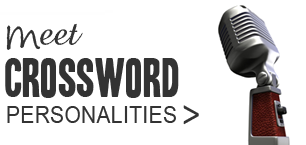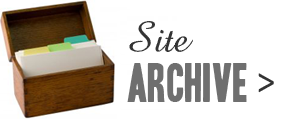
In this case, the data is so overwhelming that it leaves no doubt - but often the difference between plagiarism and coincidence is not so marked. A few clues with shades of similarity, a brilliant clue that was done before, an identical theme, even a full puzzle almost like another – any of it can happen by sheer chance.
In 2015, two consecutive Guardian prize puzzles by different setters carried the same theme of US Presidents – the grid fills naturally shared common entries, and what was arguably the cleverest clue in both employed the same wordplay device.
In 2009, two American crossword setters produced crosswords with a theme that, on the face of it, doesn't look like it could get repeated: phrases with the word RAVEN embedded inside. Both puzzles had near-identical theme entries in the exact same places in the grid. Matt Gaffney, the setter of one of those puzzles, wrote about how such a thing could happen independently and coincidentally.
Earlier when I spotted similar clues across crosswords, I used to blog about it (Déjà Vu, The Times Squires). I discontinued doing so as finding such commonality turned out to be too frequent to be post-worthy. Talented wordsmiths can surely see without external prompting that a TARANTULA is "natural at spinning" or a RHINO is a "one-horn animal" – it surprises me no more to find these words clued by different setters in the same style.
Some words (extra risotto, anyone?) are grid-friendly and will show up often in crosswords. Some words can be treated for clueing in only so many ways. Sometimes the ways of word breakup are many but two setters pick the same idea since it produces a great surface.
In clue-writing contests such as CCCWC, which do not make the entries public till after the deadline, participants cannot possibly copy/get inspiration from other participants' clues. And yet, declare the clue word CLEMENTINE and three entrants turn in "Papal cross? (10)".
So how do we identify a case of wilful copying?
If a setter does actually lift/tweak another setter's work, it is hard to tell when the instances of resemblance are few and the clues in question aren't markedly different from the setter's usual style. Only the setter knows!
I believe that we should be careful in using the P-word unless the evidence is very strong, such as:
- Repetitions over a large volume of puzzles
- Wide variation in quality of puzzles/clues by the setter
- A pattern of resemblance to others' work especially in the long grid fills, where the potential for copying is the highest
The recent case reveals another tell-tale sign: expressing a disregard for the puzzle that your own work closely resembles. Not a fan, never have been a fan? If these repetitions were by chance, the setter/editor would like the crosswords that happen to be uncannily similar to his own!
Sometimes even a single clue can raise suspicions of copying. Say an amateur setter whose clues are generally unremarkable writes a brilliant clue on social media. There will be those who notice this anomaly and search for the clue online. If they find that this clue resembles a winner on another CWC, they will suspect. If this happens over and over, they will be sure. There may not be charges of theft made openly, but people watch, people know!
With publicly available puzzle databases and advanced search tools online, plagiarising puzzles/clues is easy. What is also easy is getting caught. The same puzzle databases and advanced search tools are available to consumers of puzzles. Puzzle solvers are smart and curious and driven to unraveling mysteries. Plagiarism in puzzles, if attempted, is bound to come out sooner or later.
Related Posts:
- A Puzzling Difference Between Crossword Solvers and Non-Solvers
- Crossword Bloggers' Jargon – Decoded!
- What makes a crossword a good collection of clue types?
If you wish to keep track of further articles on Crossword Unclued, you can subscribe to it in a reader via RSS Feed. You can also subscribe by email and have articles delivered to your inbox, or follow me on twitter to get notified of new links.









 Follow on Twitter
Follow on Twitter Join us on Facebook
Join us on Facebook Get RSS
Get RSS

10 comments
In US NYT-type crosswords, in countless instances, theme words/phrases are absolutely original with some inventiveness/twist/addition or deletion of letter strings in existing phrases, etc. Their presence in a later grid, even if they are not in exactly the same slots as before, can immediately be stamped PLAGIARISED.
Hi Shuchi, I find a reference to one of my clues in the above post. I couldn't get the context. Could you please elaborate?
Arden
ranger
From what I understand, Shuchi is quoting the Arden clue approvingly and guesses that the WP is so good that another setter too may by coincidence think of the same.
Upon reading it, the UK setter writes that he has indeed used similar wordplay for the same word and that clue would appear in a subsequent crossword - too late for him to rewrite the clue.
I think the context is: two setters may sometimes write exact or similar clues with no charge of 'plagiarism'.
Shuchi, is my guess correct?
Hi Arden,
The photo is of an old twitter conversation. When your clue was published in THC, I had liked it and shared it on twitter.
Dean Mayer (@anaxcrosswords), a British setter, responded that he had written a clue similar to yours which was soon to be published.
He had not seen your clue before this and came up with the idea independently. My point is that these are instances of "great minds thinking alike" and not of copying.
Hi CV Sir,
"two setters may sometimes write exact or similar clues with no charge of 'plagiarism' " - exactly what I wanted to convey through that screenshot. I had not guessed, though, that any other setter had had the same idea - I had simply tweeted Arden's clue for others to solve/admire.
PS: Clicking on the photo will open the full conversation on twitter.
''another setter too may by coincidence think of the same.'' What are the odds? Too far-fetched ! On a scale of 1 to 10 ?
@raju: Whatever the odds, it can happen and it does happen. If you read the article, you will find mentions of real cases where two setters had no access to each other's clues, yet came up the same clue.
With so much of improved accessibility, & creation of databases, original setters i guess are under now more pressure(or scanner); we clearly had a case in THC(everyone one knows who..Dr. Jekyll & Mr. Hyde).
Clue writing is an art..a difficult art..& as with all art forms is liable to shall we say "lifting"?
Hi Shuchi,
Thanks for the clarification. With the large number of puzzles being churned out nowadays, it's but natural that the same words and same or similar clues crop up regularly. I remember in another instance where in my puzzle TH 10429 21 Ac, the word and the anagram fodder were also used in the Guardian puzzle published on the same day. I think the setter was Chifonie. It is becoming more and more difficult cluing words in a way which was not done before, so much so that one is forced to sit and stare at the ceiling( it's supposed to help sometimes!). Was it Ralph Waldo Emerson who said "all my best thoughts were stolen by the ancients?"
Regarding your observation on 'great minds thinking alike', I'm sure Dean Mayer is one, but definitely not me!
Having read some of the US articles on this case, it certainly appears that plagiarism has taken place, but there are grey areas too. One article provided about half a dozen grid examples which ranged from similar answers (eg the RAVEN grid) but with different placements to identical answers and grid placements, so while we might accuse Parker of directly lifting some puzzles it's clear others have only served as an influence.
With cryptic clues it's very different, and Ranger's comment about it becoming increasingly difficult to be original has a lot of truth. If I may digress momentarily...
Many years ago I was an oval racing track photographer, and in Banger Racing the car of choice was the Ford Granada 2.8 – a seemingly endless supply, strong, easy to work with, cheap to acquire – and I remember asking someone what would replace it when stocks finally ran out. His reply was along the lines of “They will always be available”. Not so – they are now very rare (and thus expensive). Drivers have moved on to Volvo estates, Jags, Ford Mondeo.
As recently as 15-20 years ago we probably felt the same about cryptic clues. Remember, the sophisticated modern cryptic as we know it has barely reached middle age in human terms. And in its earlier days we had no internet, so inadvertent copying of ideas, even to the extent of (near) identical clues, would almost certainly go unnoticed. Setters are now far more conscious of the likelihood of accidental copying because clues are out there on the blogs, and with most papers offering their puzzles online more solvers are tackling multiple puzzles per day. And, of course, when one setter creates something new it is one crossed off the list of potential new ideas. Put it this way – we're offering new definitions, indicators etc etc far more quickly than new words are being added to the language. As the stock can only deplete, repetition is inevitable.
It has reached the stage where some setters, myself included, put at least a handful of answers into crossword blog search boxes and look for recently used clues so that we can avoid repetition. But we have to bear in mind that the gap of usually a few months between submission and publication opens the door to our 'original' clues appearing elsewhere too late for us to go back and make changes.
What has happened in the USA looks troubling, but I have to be honest; if the plagiarism is limited to theme ideas and theme answers, it doesn't feel as bad (to me) as cryptic setters stealing others' clues. In US puzzles you have the theme, but you also have the clues and they form the greatest part of the solving experience. In UK-type cryptics the clues are everything and they are the mark of the setter.
Post a Comment